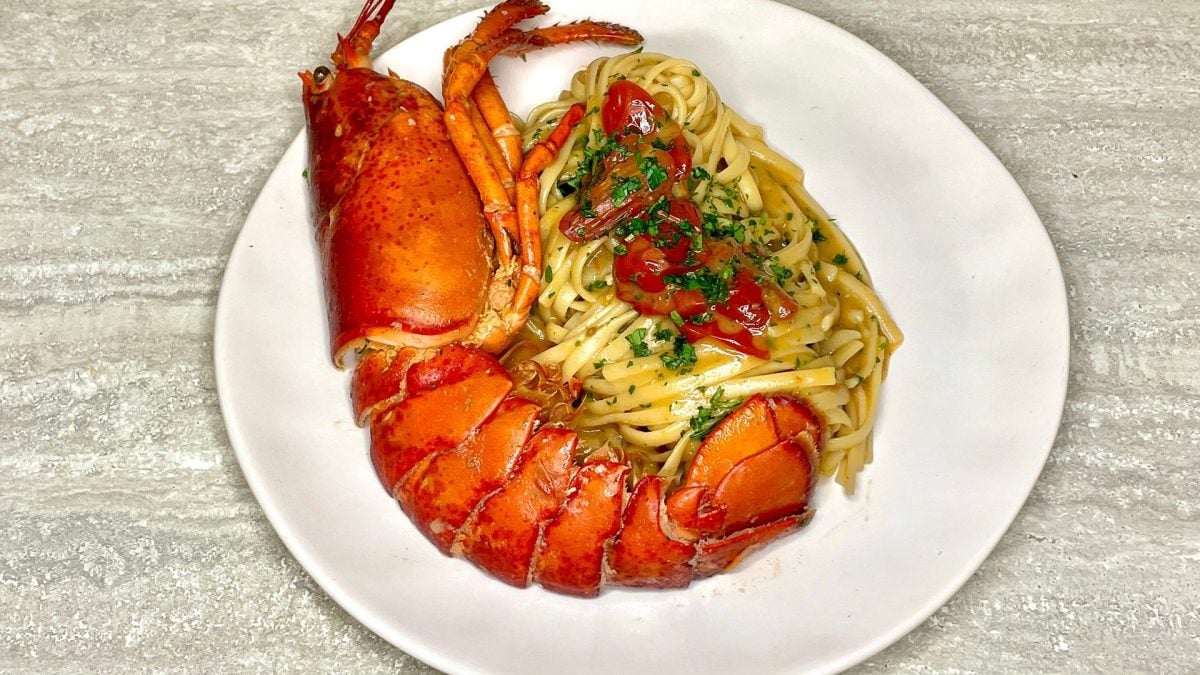
Creamy Tomato Lobster Linguine are a great classic of Italian cuisine, a refined seafood main dish whose protagonist is one of the most prized and expensive crustaceans in the world. Precisely to enhance this extraordinary fish product at its best, the recipe for this delicious dish ideal for holidays and special occasions is very simple: linguine, lobster, cherry tomatoes and fresh parsley are in fact the only ingredients needed to prepare it.
What Are Tomato Lobster Linguine?
Lobster linguine, while rooted in Mediterranean cuisine, particularly Italian coastal traditions, has become a celebrated dish in American seafood culture. In the U.S., its history traces back to New England, where the abundance of fresh lobster made it a staple in seaside towns. As Italian immigrants brought their culinary traditions to America in the early 20th century, dishes like linguine all’astice (lobster linguine) found new expression by combining locally sourced lobsters with traditional pasta-making techniques. The result was a luxurious fusion of Italian finesse and American seafood richness. Over time, lobster linguine became a symbol of indulgence, often featured in upscale restaurants and festive occasions, embodying the American love for both comfort food and gourmet sophistication.
Pro Tips for The Best Tomato Lobster Linguine
- Lobster meat becomes rubbery if overcooked. Gently simmer the lobster in the sauce just until it's heated through and infused with the flavors.
- Simmering the lobster shells in the tomato base or a bit of stock before discarding them adds a deep, briny richness to the sauce.
- Undercook the linguine slightly in boiling water, then finish cooking it in the sauce to allow the pasta to absorb all the flavors.
- A splash of dry white wine enhances the sauce’s depth and pairs beautifully with the sweetness of lobster.
- Taste and adjust the seasoning carefully – the sweetness of the lobster should complement the acidity of the tomatoes and the heat from chili (if used).
Can I Use Frozen Lobster?
Yes, you can use frozen lobster for lobster linguine, especially if fresh lobster isn't available. Just make sure to thaw it properly in the refrigerator before cooking, and avoid overcooking it to maintain a tender texture. While fresh lobster delivers a more intense flavor, high-quality frozen lobster can still produce a delicious and satisfying dish.
What Other Sauce Goes Well With Lobster?
Besides the classic tomato-based sauce, lobster pairs wonderfully with creamy sauces like a garlic butter cream sauce, lemon herb beurre blanc, or even a saffron-infused cream for a luxurious touch. Light olive oil-based sauces with white wine, garlic, and fresh herbs also highlight the natural sweetness of lobster without overpowering it.
What is The Best Pasta to Use for Lobster?
The best pasta to use for lobster is linguine, as its flat, narrow shape holds sauces well and complements the delicate texture of lobster meat. Other great options include fettuccine for creamier sauces, spaghetti for a lighter touch, or pappardelle if you're aiming for a heartier dish.
What Can I Serve With Lobster Linguine?
A crisp green salad with a light vinaigrette offers freshness, while garlic bread or a toasted baguette is perfect for mopping up the sauce. For drinks, a chilled glass of dry white wine like Chardonnay or Pinot Grigio enhances the seafood flavors. You could also serve a simple grilled vegetable medley or steamed asparagus to add color and balance to the meal.
Can I Make Them Ahead of Time?
Lobster linguine is best enjoyed fresh, but you can prepare certain elements ahead of time. Cook the sauce and store it in the fridge for up to a day, then reheat gently before adding freshly cooked pasta and lobster. Assemble just before serving for the best taste and presentation.
Do They Freeze Well?
Lobster linguine doesn’t freeze well as a complete dish. The lobster can become rubbery, and the pasta may turn mushy upon thawing. However, you can freeze the sauce separately—preferably without the lobster—and add fresh lobster and pasta when reheating.
How to Store Tomato Lobster Linguine
To store leftover lobster linguine, place it in an airtight container and refrigerate it within two hours of cooking. It will keep well for up to 1–2 days.
Reheat gently on the stovetop over low heat, adding a splash of water or broth to loosen the sauce. Avoid microwaving if possible, as it can overcook the lobster and pasta. Always ensure it’s heated through before serving.
Ingredients
How to Make Tomato Lobster Linguine
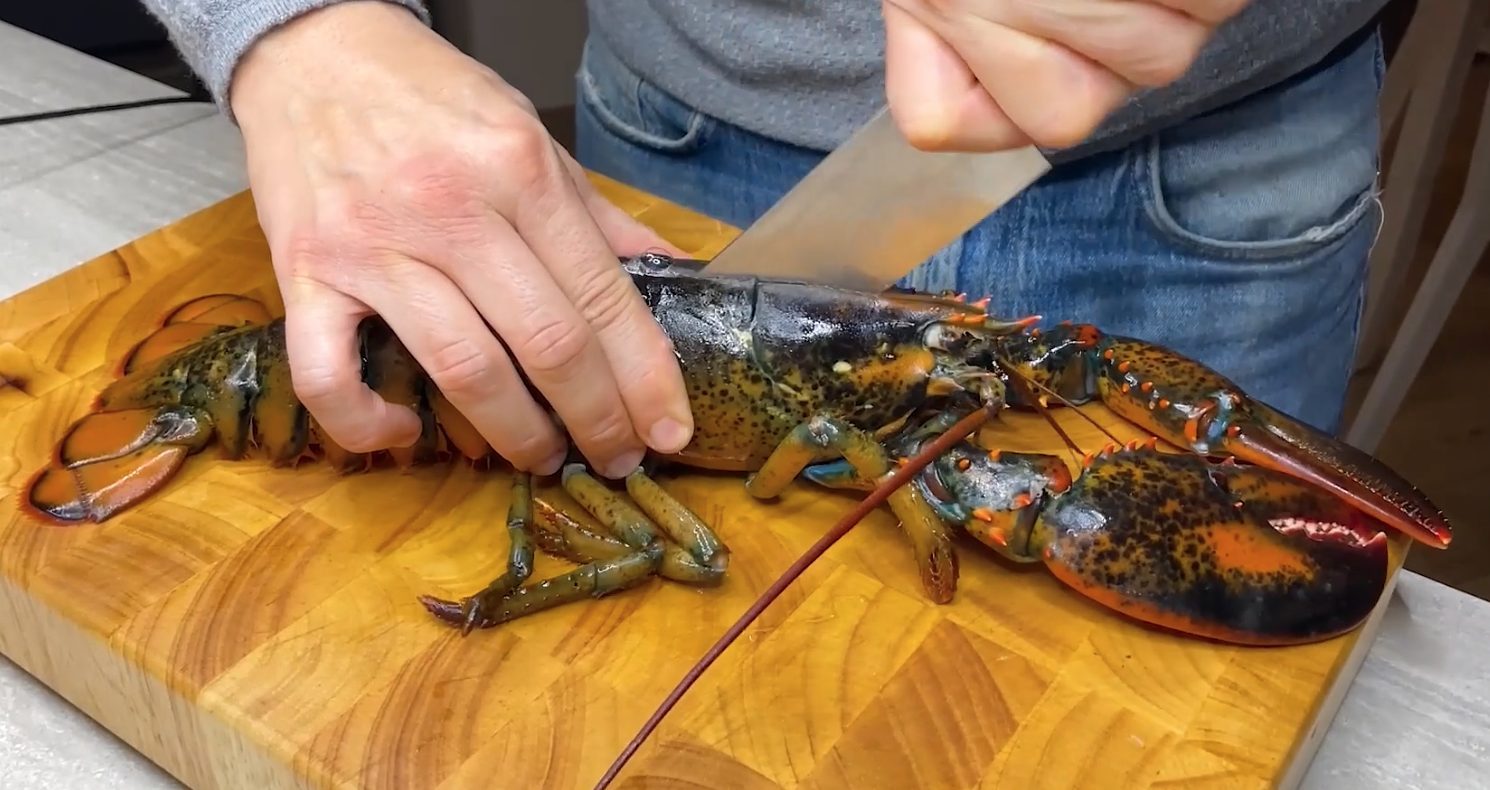;Resize,width=712;)
Start preparing the dish by cleaning the lobster: using a smooth-bladed knife, first cut the head and then the tail, thus dividing the crustacean into two parts.
Start preparing the dish by cleaning the lobster: using a smooth-bladed knife, first cut the head and then the tail, thus dividing the crustacean into two parts.
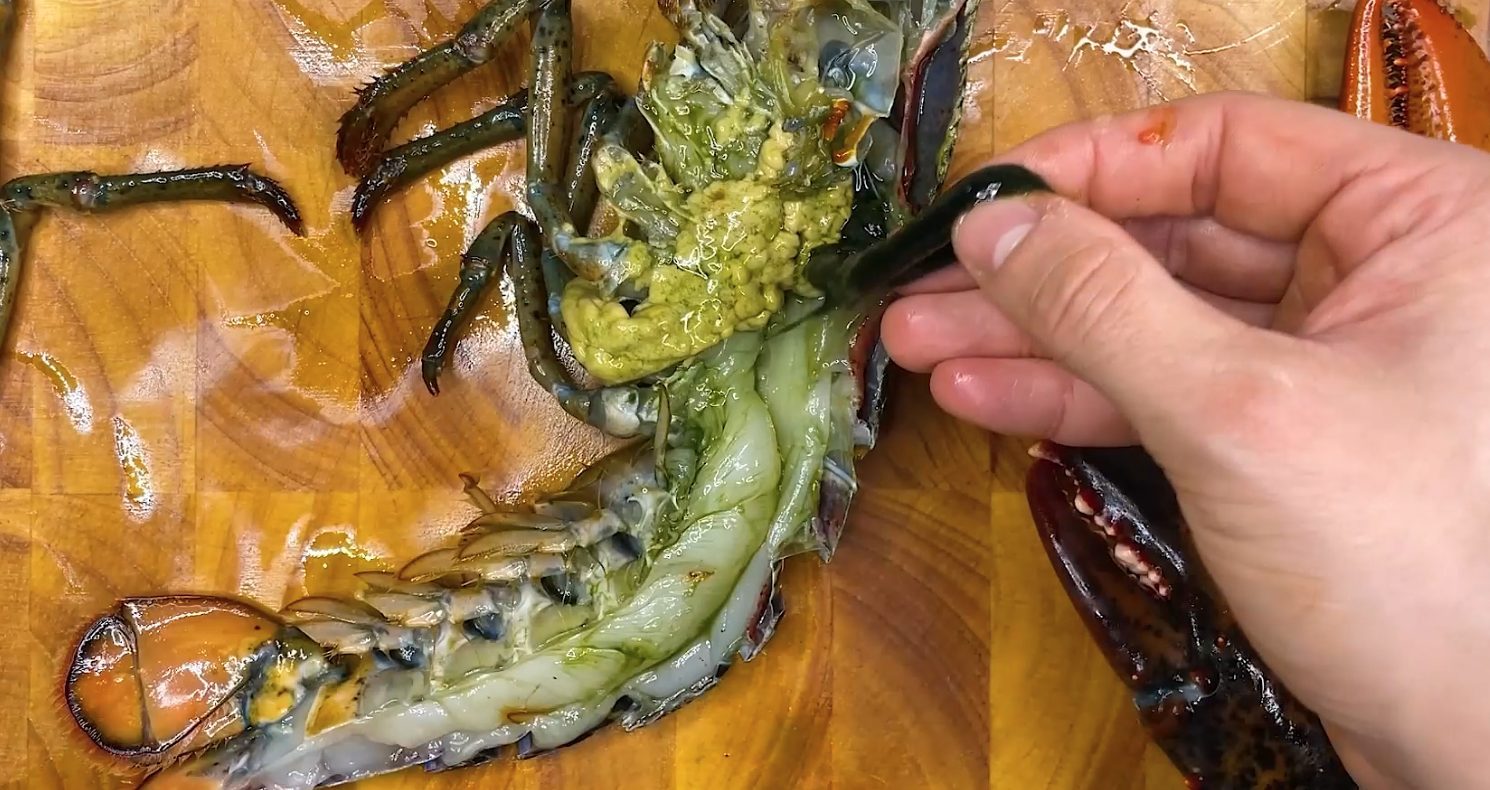;Resize,width=712;)
Then remove the intestine, which is the black thread that is found along the back, pulling it away with your fingers. If necessary, remove any sand residue from the head.
Then remove the intestine, which is the black thread that is found along the back, pulling it away with your fingers. If necessary, remove any sand residue from the head.
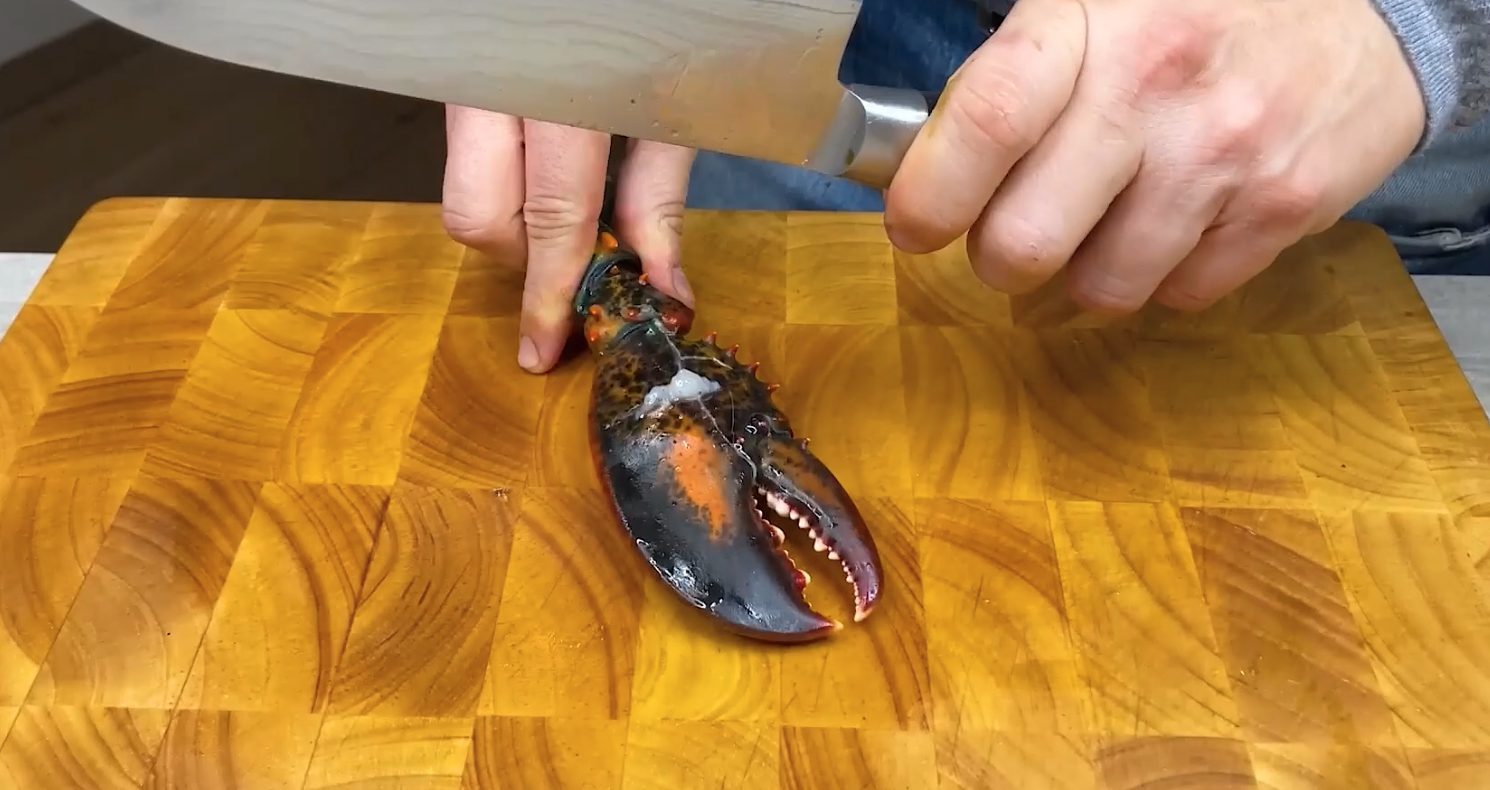;Resize,width=712;)
Now gently beat the claws with the blunt side of the knife, until the shell breaks: this way the juices contained inside them will be released into the dressing, making it super tasty.
Now gently beat the claws with the blunt side of the knife, until the shell breaks: this way the juices contained inside them will be released into the dressing, making it super tasty.
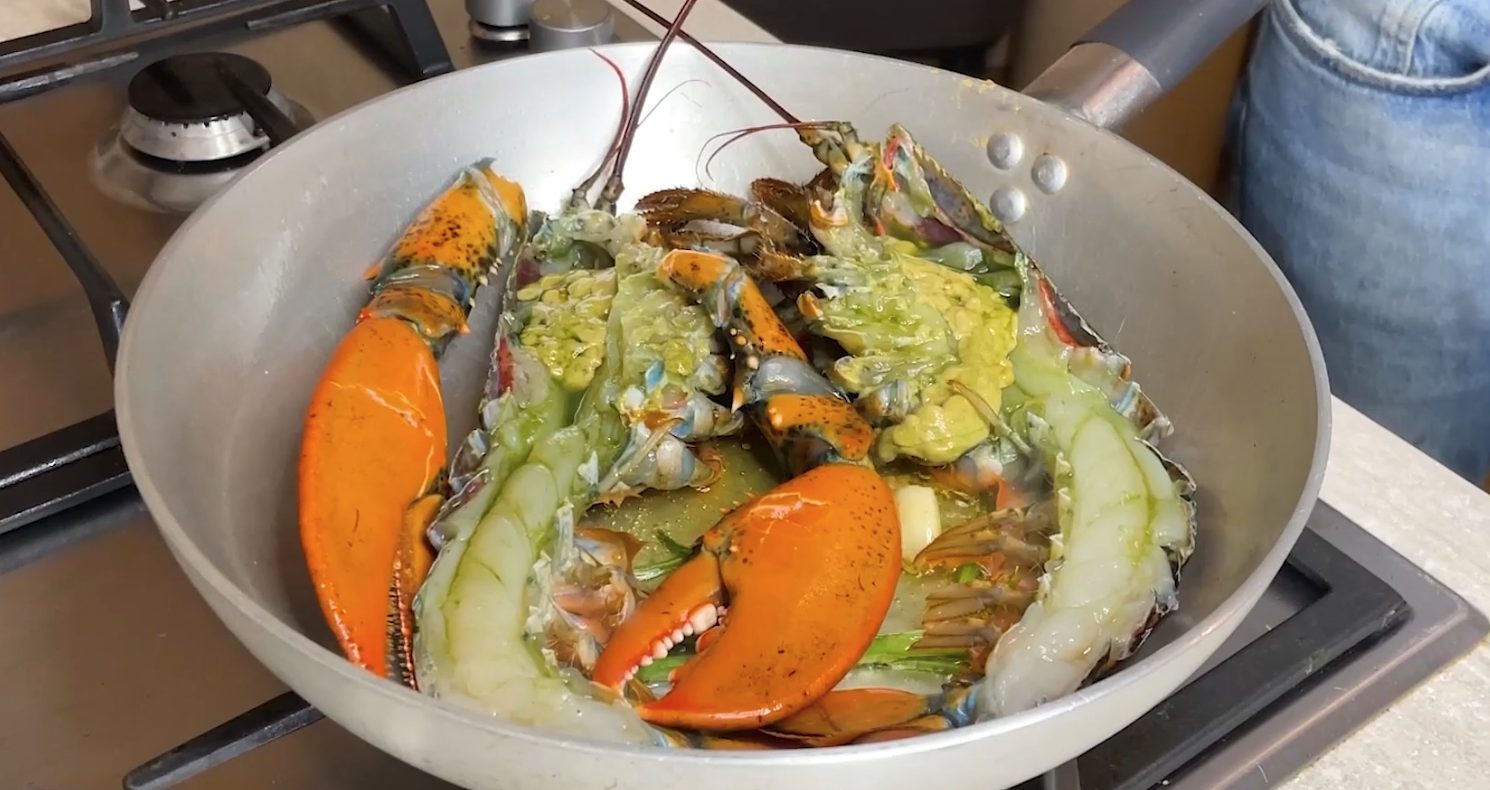;Resize,width=712;)
In a large pan, preferably aluminum, fry the crushed garlic cloves and parsley stalks. After a few seconds, arrange the claws and the lobster cut in half, making sure to place it shell-side down, so that the pulp inside remains soft and juicy.
In a large pan, preferably aluminum, fry the crushed garlic cloves and parsley stalks. After a few seconds, arrange the claws and the lobster cut in half, making sure to place it shell-side down, so that the pulp inside remains soft and juicy.
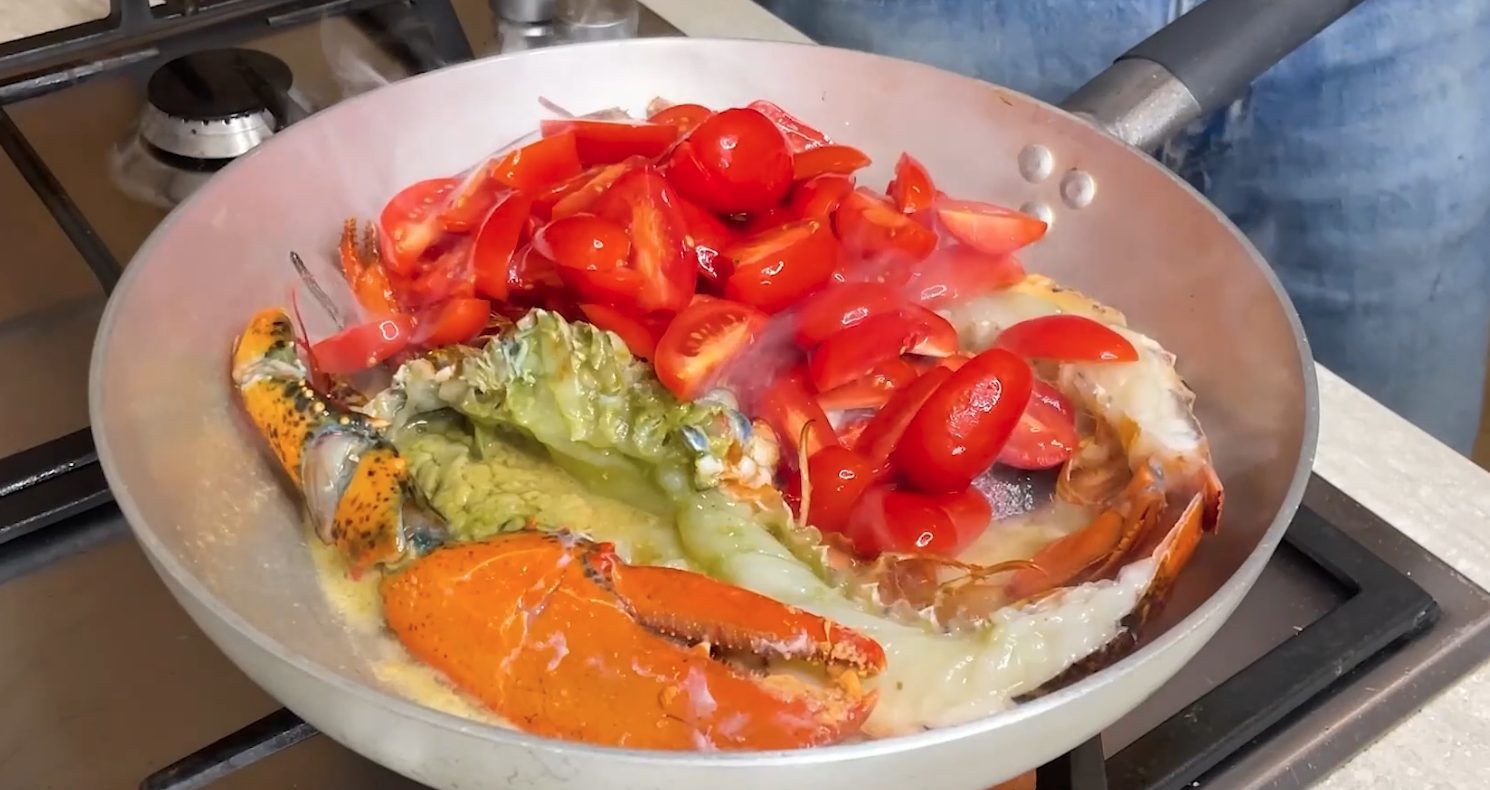;Resize,width=712;)
Then add salt, blend with white wine and add the cherry tomatoes cut in half.
Then add salt, blend with white wine and add the cherry tomatoes cut in half.
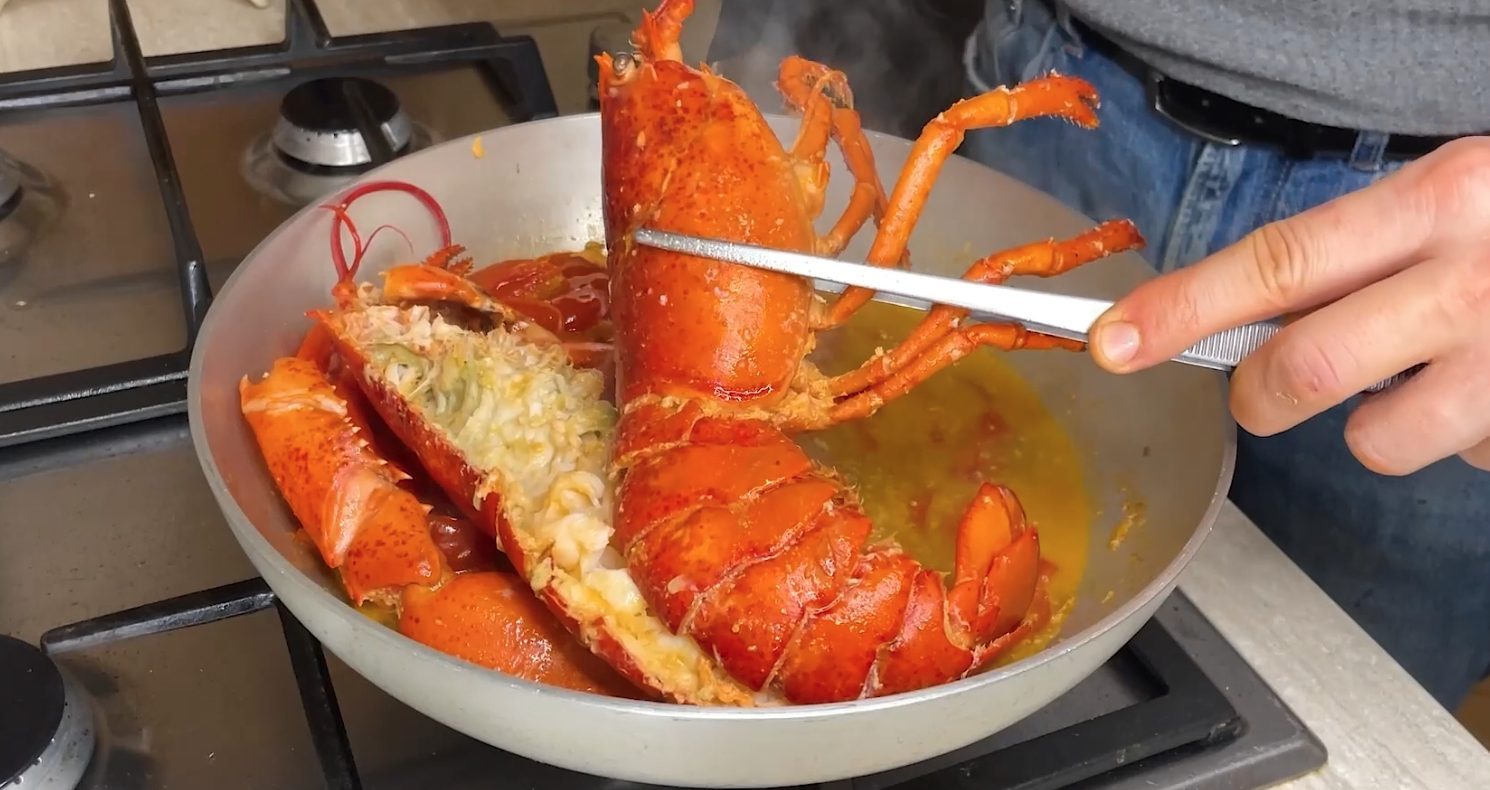;Resize,width=712;)
Cover with a lid and continue cooking, keeping in mind that the lobster should not remain on the heat for more than 10 minutes, otherwise the flesh would tend to harden. As soon as the shell has become a nice bright red, turn off the heat and set aside in a warm place, leaving the sauce in the pan.
Cover with a lid and continue cooking, keeping in mind that the lobster should not remain on the heat for more than 10 minutes, otherwise the flesh would tend to harden. As soon as the shell has become a nice bright red, turn off the heat and set aside in a warm place, leaving the sauce in the pan.
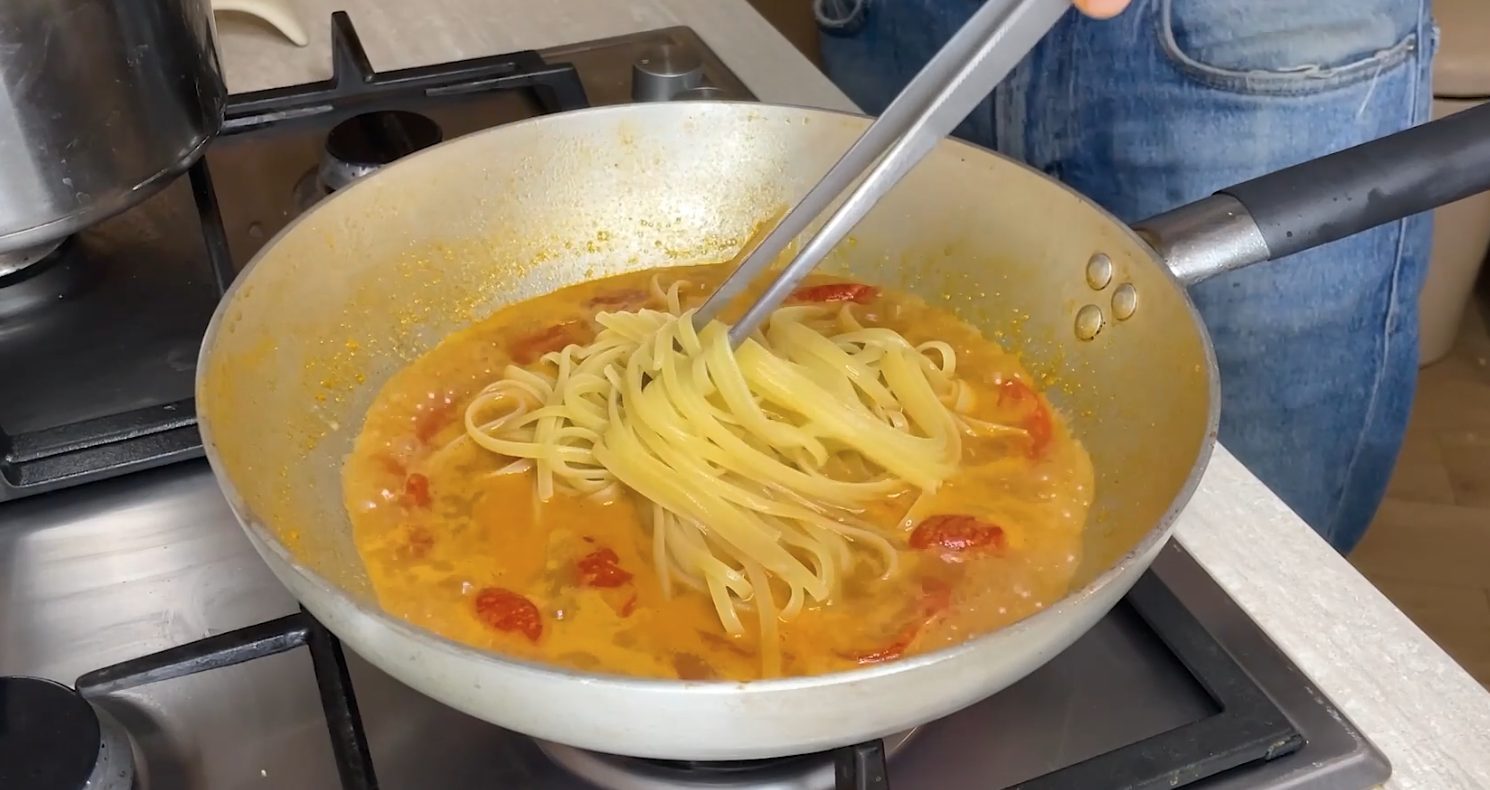;Resize,width=712;)
At this point, boil the linguine in plenty of salted boiling water and drain them 3 minutes before the time indicated on the package, without throwing away the cooking water. Transfer them to the pan with the sauce and cook it, adding, if necessary, one or two ladles of the water kept aside, the starch of which will make the dressing even creamier.
At this point, boil the linguine in plenty of salted boiling water and drain them 3 minutes before the time indicated on the package, without throwing away the cooking water. Transfer them to the pan with the sauce and cook it, adding, if necessary, one or two ladles of the water kept aside, the starch of which will make the dressing even creamier.
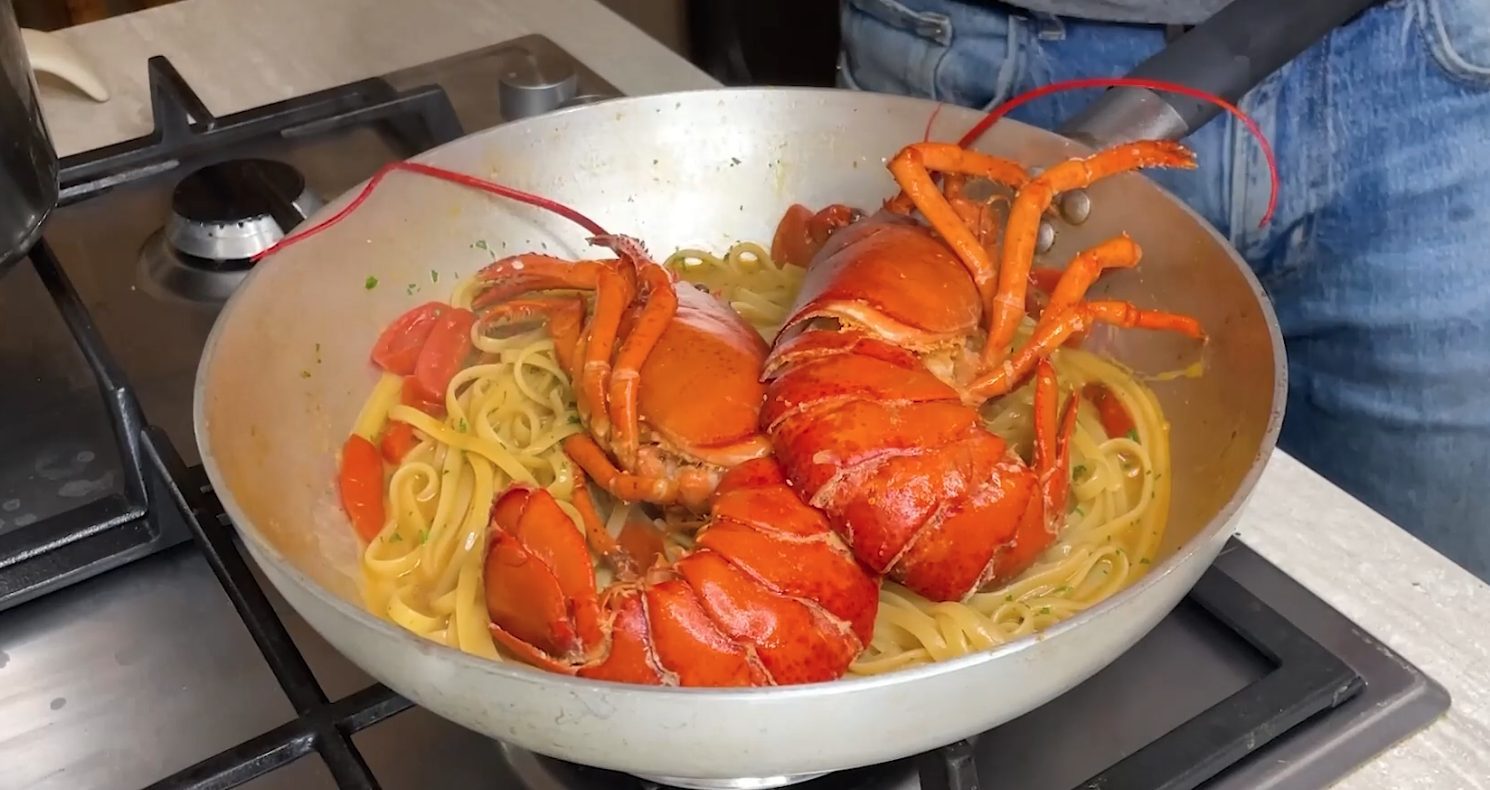;Resize,width=712;)
At this point, add chopped fresh parsley and place the lobster and mix very gently.
At this point, add chopped fresh parsley and place the lobster and mix very gently.
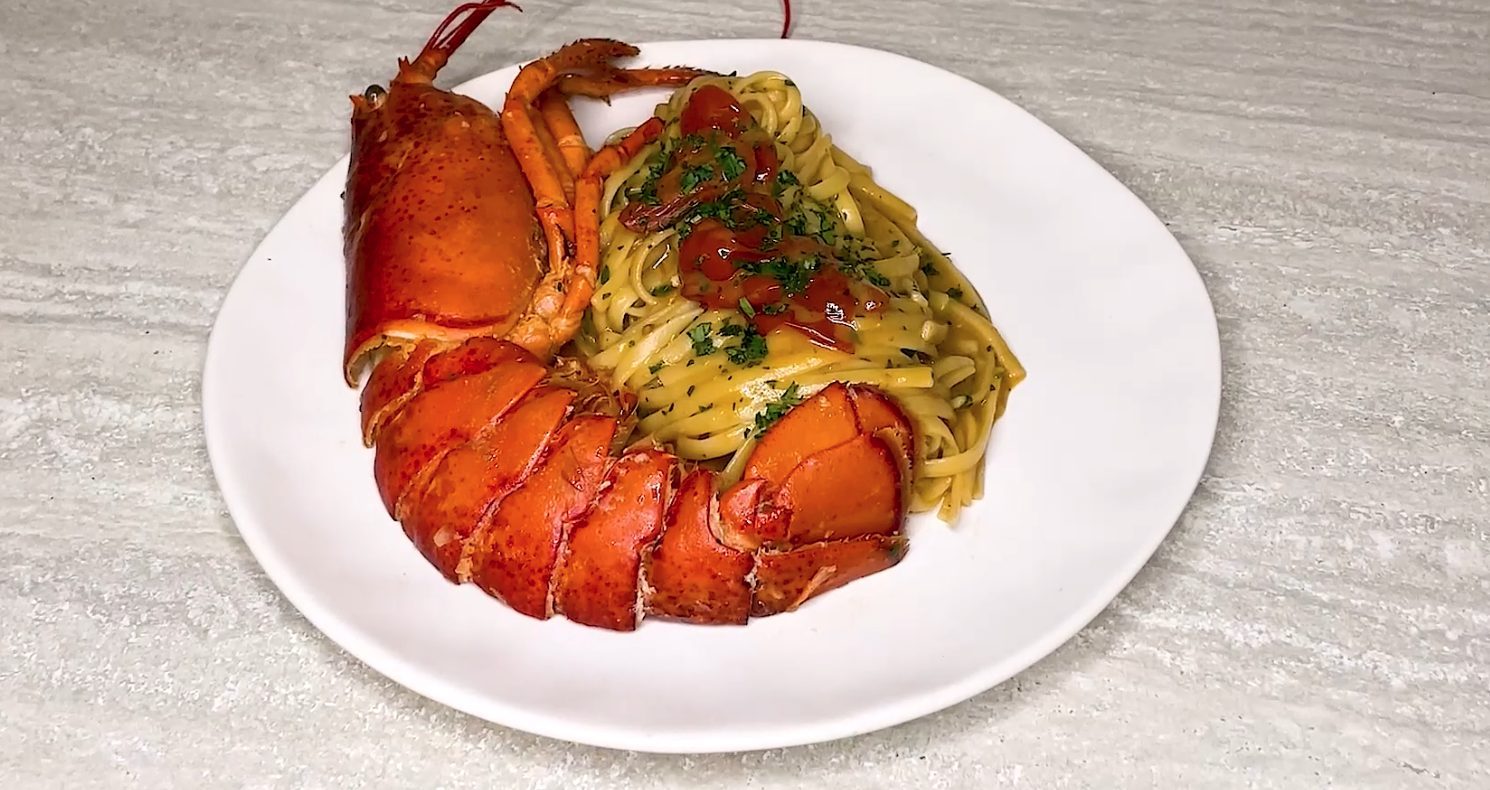;Resize,width=712;)
It's time to plate: roll up the linguine with the help of kitchen tongs and arrange them on a plate, then drizzle them with the seasoning sauce, add a little more fresh parsley and finally arrange the lobster, with the shell facing upwards. Enjoy!
It's time to plate: roll up the linguine with the help of kitchen tongs and arrange them on a plate, then drizzle them with the seasoning sauce, add a little more fresh parsley and finally arrange the lobster, with the shell facing upwards. Enjoy!
;Resize,width=767;)
